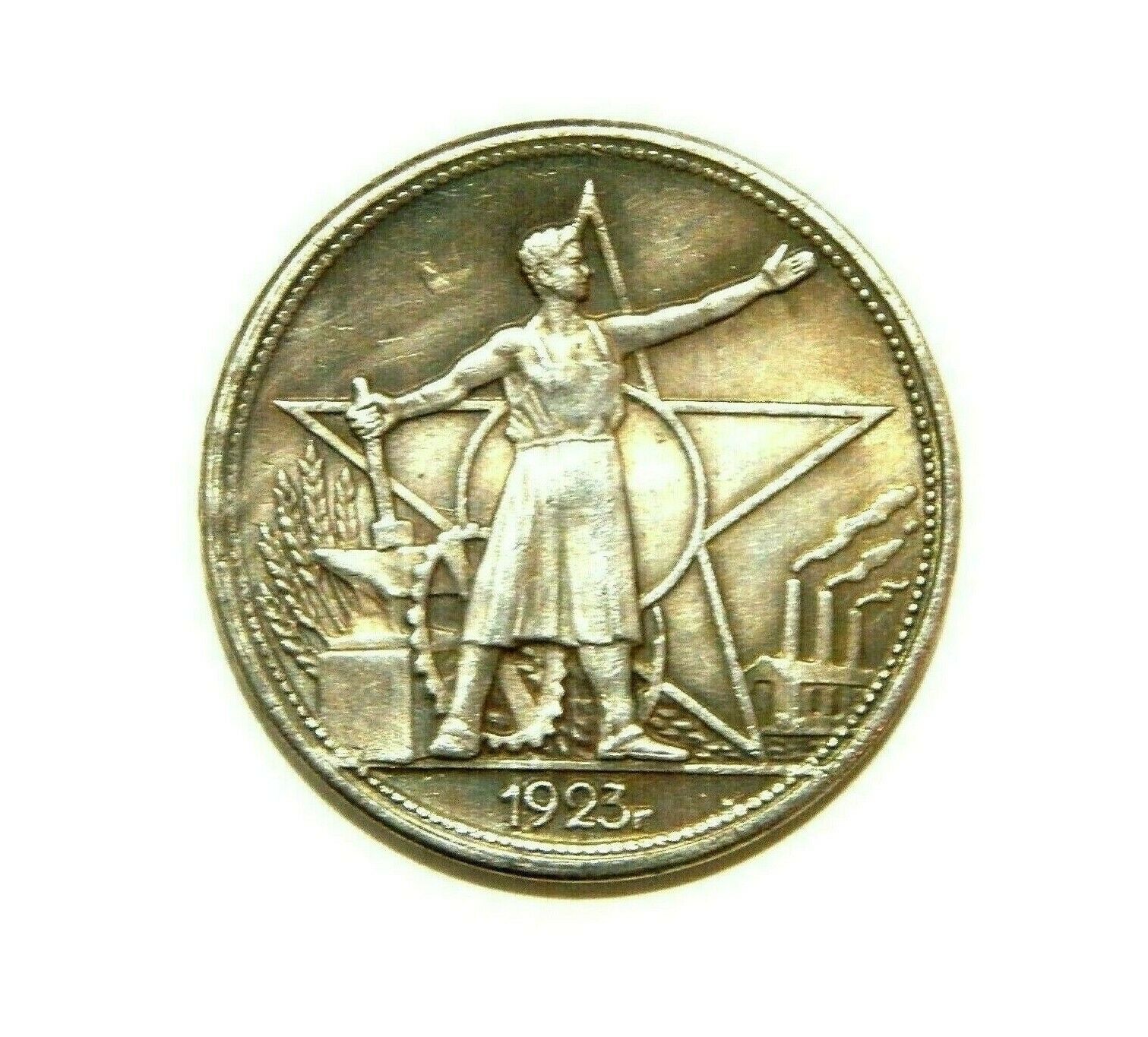-40%
1992 Last Year of USSR Currency High Value Notes Series Ruble Values 50-1000 VG+
$ 2.63
- Description
- Size Guide
Description
USSR "Pavlov Reform" High Value Ruble Series 1992What You See Is What You Get
Lot Y663: Four piece authentic Soviet Union
Cold War Era lot,
complete 1992 Series of high value banknotes. You get:
(1x) 5
0 Roubles - Bust of Vladimir Lenin (facing
right
),
new
1991 style
issue.
(1x) 2
00 Roubles -
Bust of Vladimir Lenin (facing
right
),
new
1991 style
issue.
(1x) 5
00 Roubles -
Bust of Vladimir Lenin (facing
right
)
,
new
1991 style
issue.
(1x)
1000 Roubles -
Bust of Vladimir Lenin (facing
right
)
,
new
1991 style
issue.
Interestingly, there was no 100 Ruble issue in 1992. The notes are as pictured, usual circulated conditions; light surface dirt/notations, edge wear, otherwise crisp, sound, and no funky aroma! Conditions G/F. Comes in re-closable 2mil pouch for long term storage and preservation. What you see is what you get. Makes a nice gift pack for the Old Cold Warrior, student, educator, or history buff in your life!
Thanks for Looking!
Please see my
other items
for more Soviet, Third Reich and other German items.
FREE DOMESTIC U.S. SHIPPING
Q: What am I buying, and why would I want it?
A: The notes are from the former Soviet Union and were issued in 1991, in the final days of the USSR. They were
demonetized and
withdrawn from circulation in 1993. The picturesque collection is a memento of a time not so very long ago when Humanity stood on the precipice of nuclear extinction, and when an "Evil Empire" which had murdered tens of millions, fell almost bloodlessly. You will hold history in your hands
.
This is "zombie" cash, issued in the name of a defunct government. The notes are of the same design of the Soviet Union's last 1991 series of banknotes. The 1991 currency reform was the seventh, and final, monetary reform of the USSR. It was named for its architect, the (then) Soviet Minister of Finance, and (future) Prime Minister, (and future coup conspirator,) Valentin Pavlov. (He was a busy guy. He was such a busy guy, that his business helped put an end to the Soviet Union.)
Pavlov's monetary reform was a desperate, wrenching attempt to rescue a system that was economically, and socially, falling apart at the seams. When 80 billions worth of worthless inflated rubles were vaporized by the plan, the people were pauperized, instantly, overnight. Civil unrest spread in face of the prices. Worker's strikes spread across the country. A shortage of something as simple as soap led to riots. Meanwhile, the Baltic Republics and Ukraine watched jealously as the Eastern Bloc of Communist countries dissolved on their doorsteps. It wasn't too soon before they too, grew restless.
On August 19th, the embittered, impatient, rightwing of the Communist Party struck, and attempted to depose the Soviet Union's first President, Mikhail Gorbachev. Early in the night, Swan Lake blared out from radios, and on television screens three ballerina swans sashayed on point back and forth across the stage to the same music. Then the announcement came declaring that President Gorbachev was dreadfully ill, and in no condition to lead the country. In his stead, the Party and the Government had formed the "State Committee on the State of Emergency" to oversee matters. Conveniently vacationing at his Black Sea dacha when the coup was announced, Gorbachev was a virtual prisoner, cut off from the outside. But, although the first night looked bleak, over the next four days, the coup collapsed.
Back in Moscow troops rolled into town and down the streets in tanks and armored personnel carriers. Civilian crowds threw-up makeshift barricades around government buildings with their bodies. Nobody got shot. And that was the first sign that things might not be going to plan for the plotters. Meanwhile the renegade political bugbear, Boris Yeltsin, was forming up an opposition to the coup.
Two more days of street heroics and general strikes were all that were needed to put the hardest of the hardcore Bolsheviks behind bars. The coup was broken, Gorbachev was returned, and nothing would be the same.
Not long after his return, Gorbachev officially disbanded the Communist Party of the Soviet Union with his resignation of its chairmanship. Russia, under the nationalistic leadership of Boris Yeltsin declared its independence, as had The Baltics and Ukraine. Belarus, Georgia, and Kazakhstan would soon follow. On December 25th, 1991, Mikhail Gorbachev resigned as President of the Soviet Union, the Supreme Soviet was dissolved, and the Hammer and Sickle was lowered over the Moscow Kremlin for the last time. In the old flag's place, flew an even older flag, that of the Russian Republic.
But that still left a problem of what to do for spending money.
The poorer republics in the South, especially, hadn't been able to make adequate preparations to go over to their own currencies in the limited time between the collapse of the USSR and independence. So too in Russia, where the bulk of the currency was printed in Moscow and Leningrad. The only stopgap available was to go ahead and issue the planned tranche, as it was printed, Lenin be damned. As the last stocks of Soviet era paper rolled through the presses, new designs could be worked-up, and by the end of the year, an entire new issue could be floated. And so it was that a "zombie" currency had to do its duty for six more months before it too could die like the government whose name it bore. The last of it was demonetized and withdrawn from circulation early in 1993.












